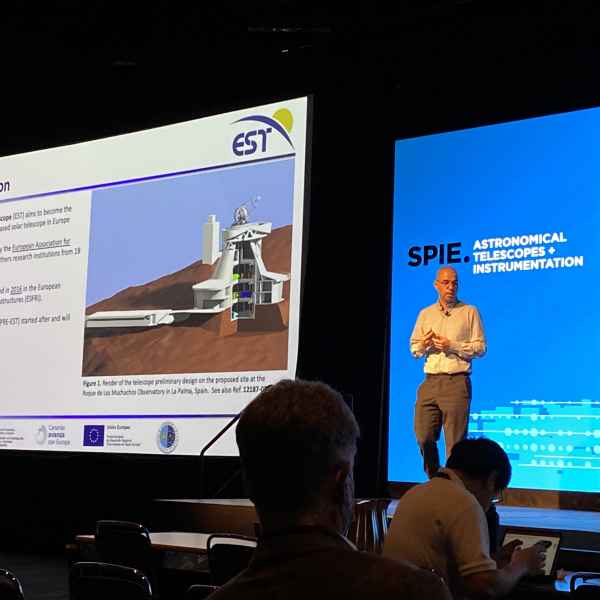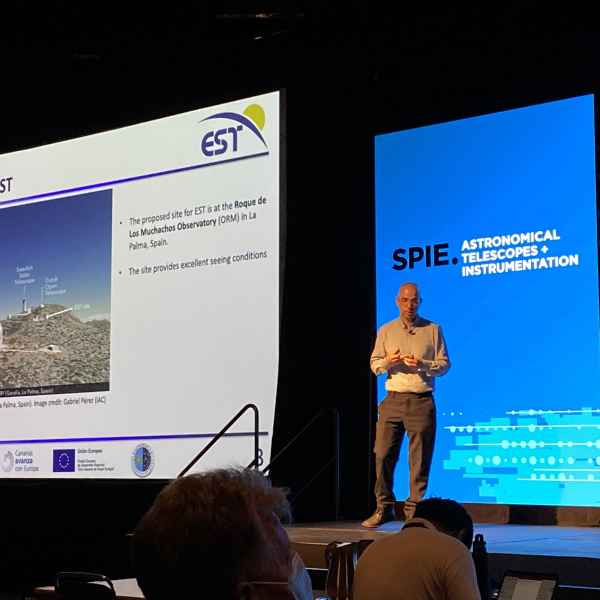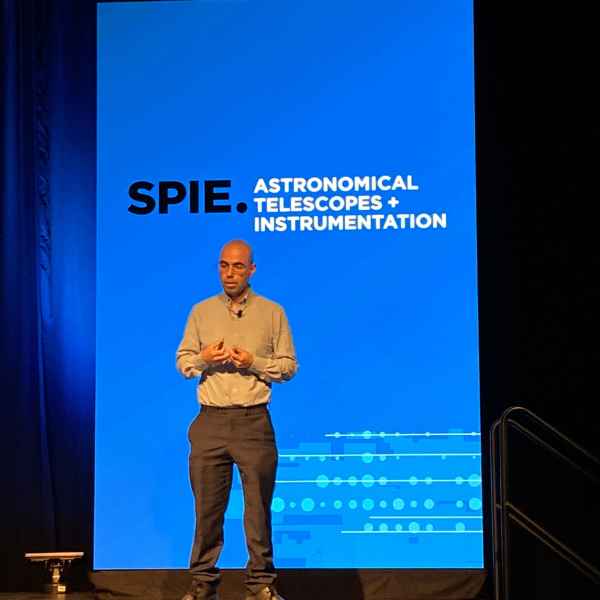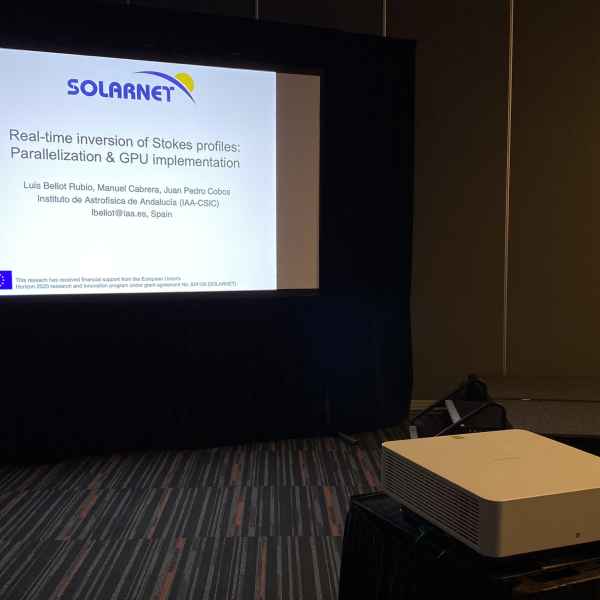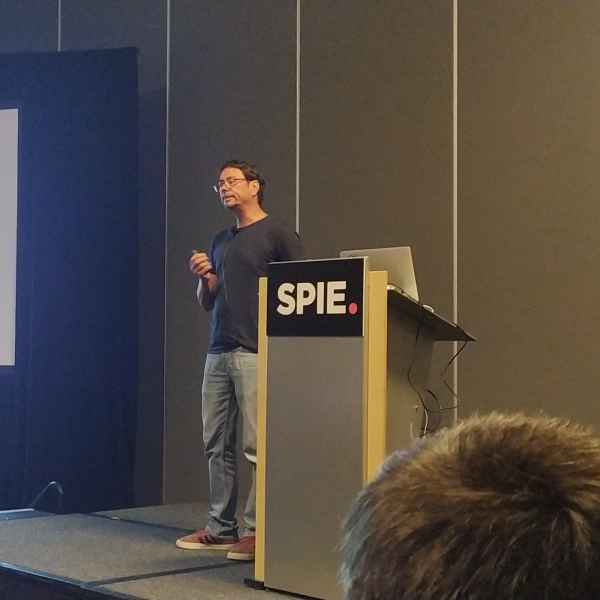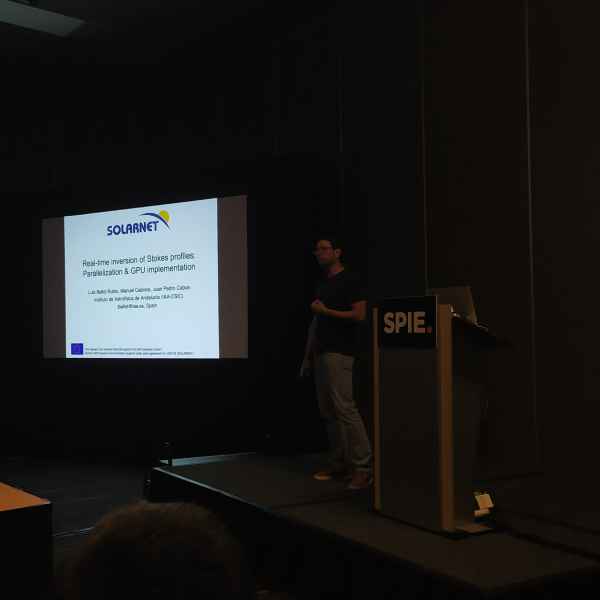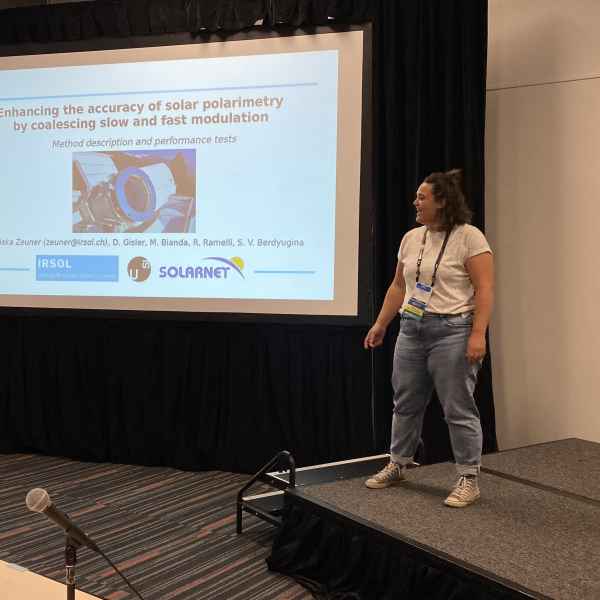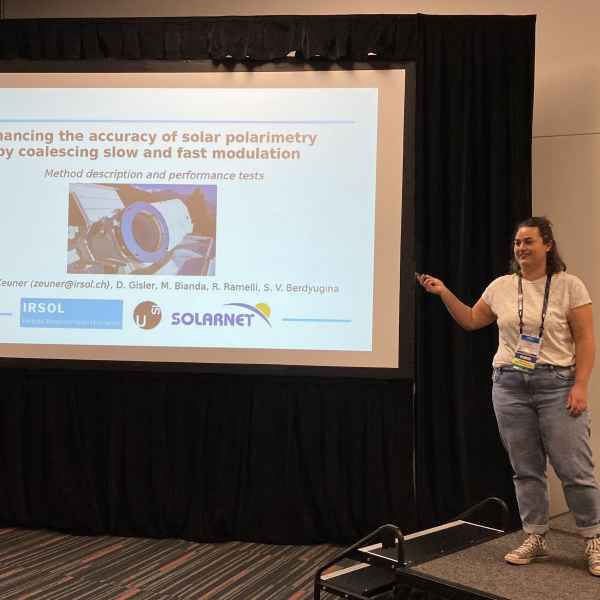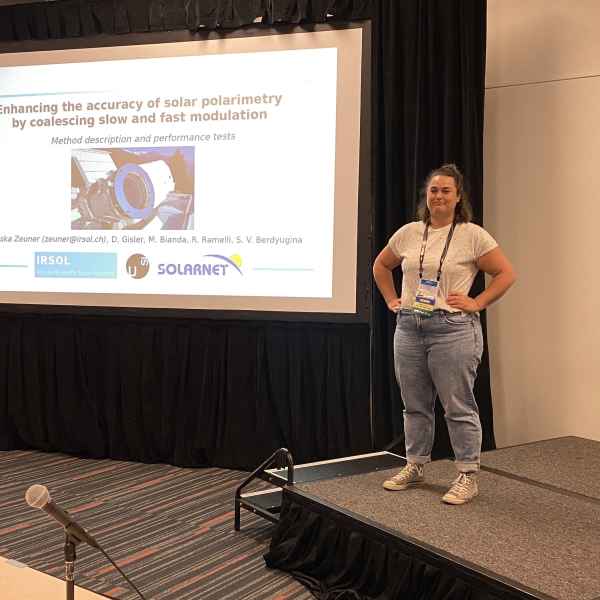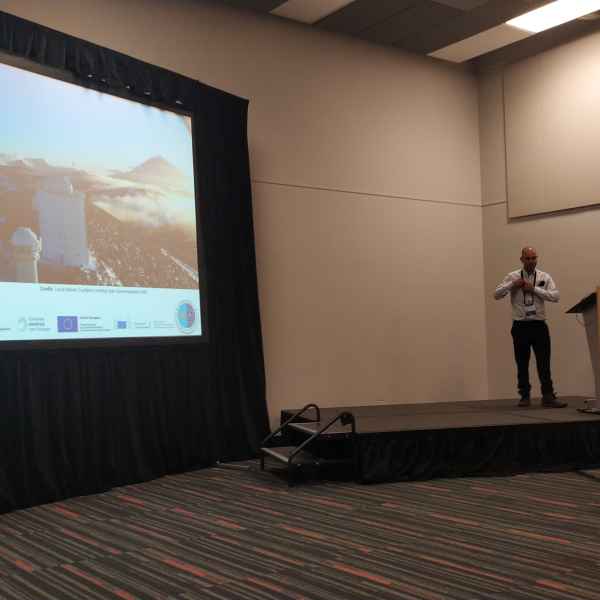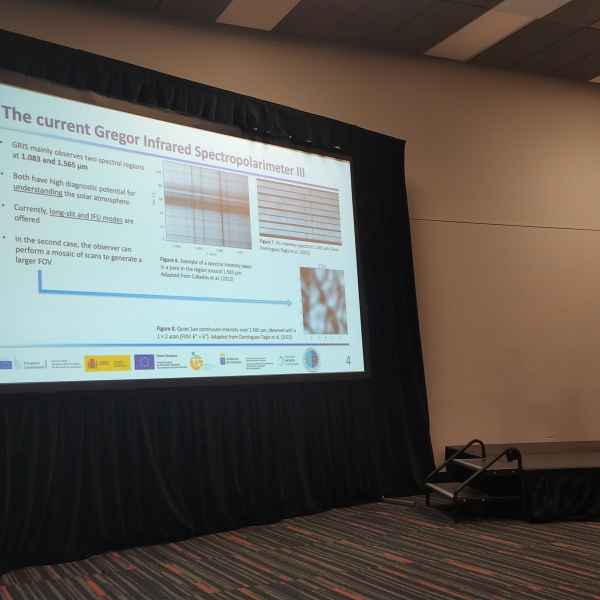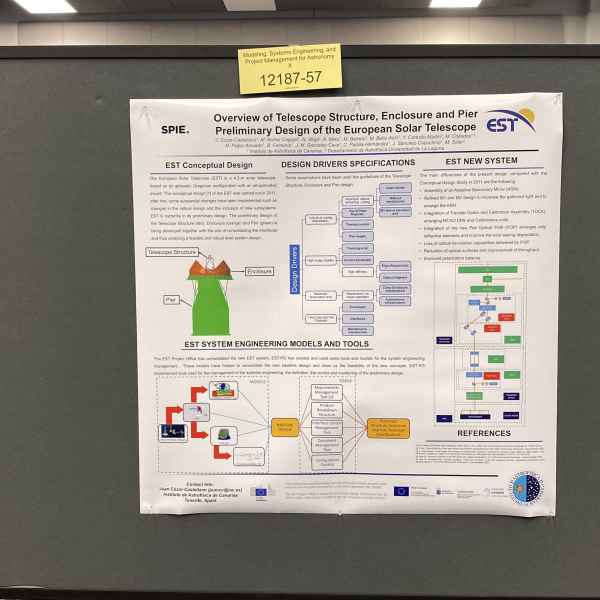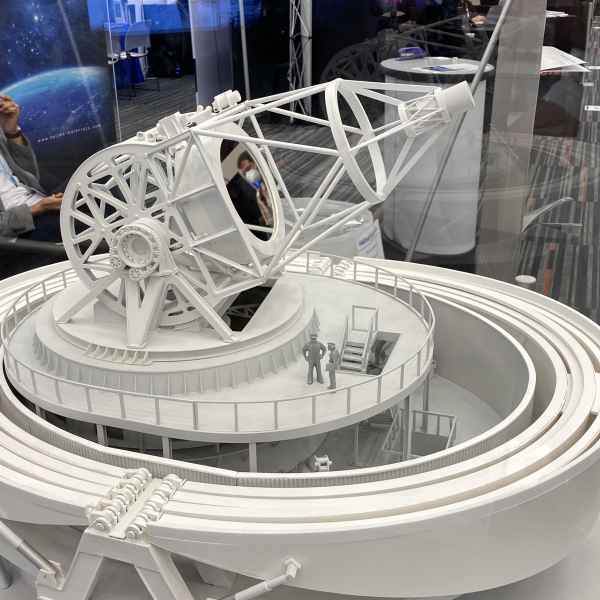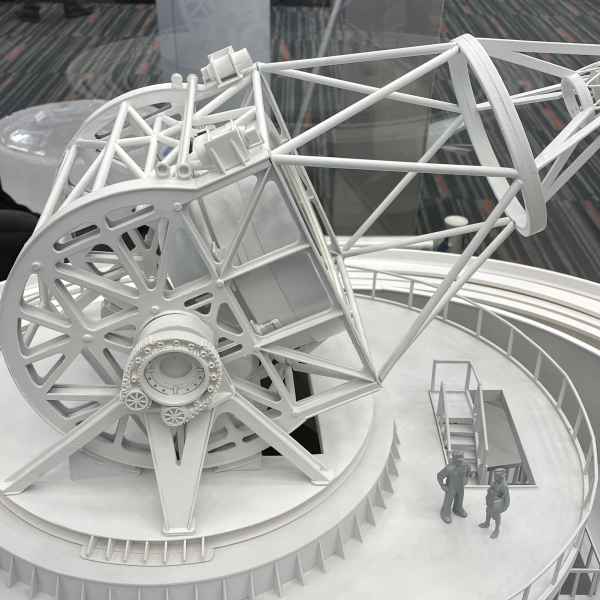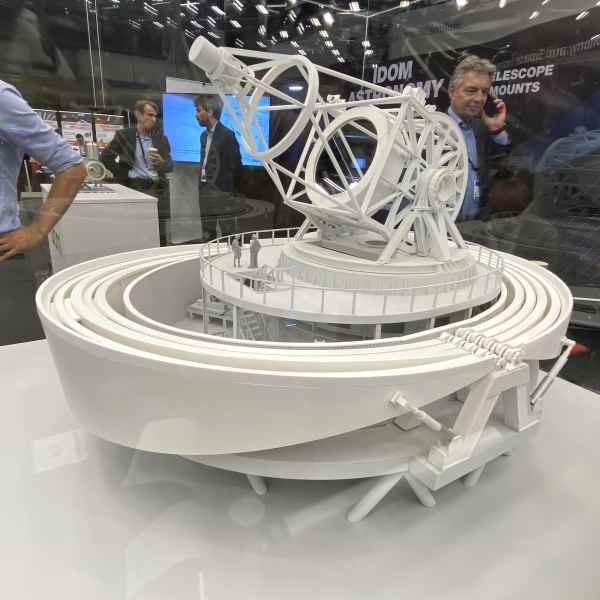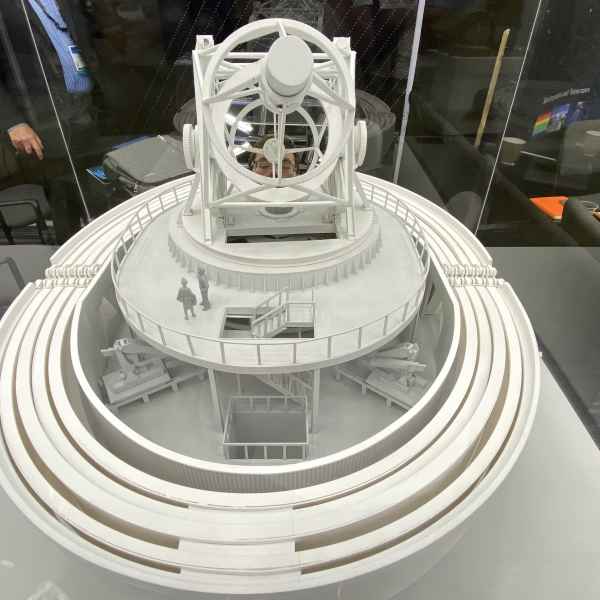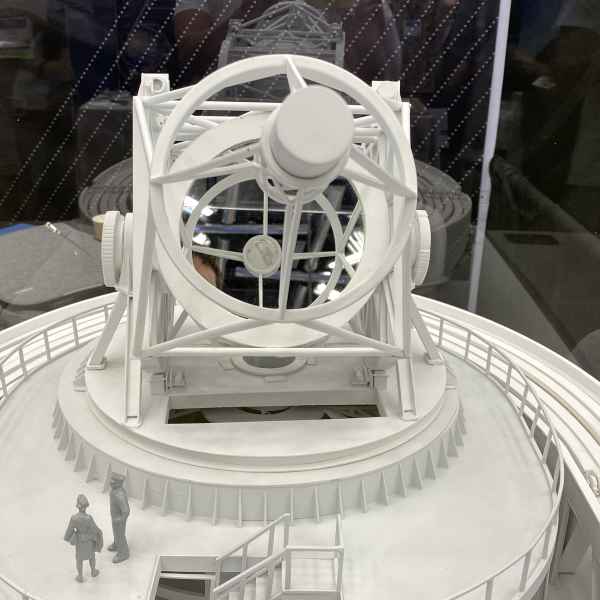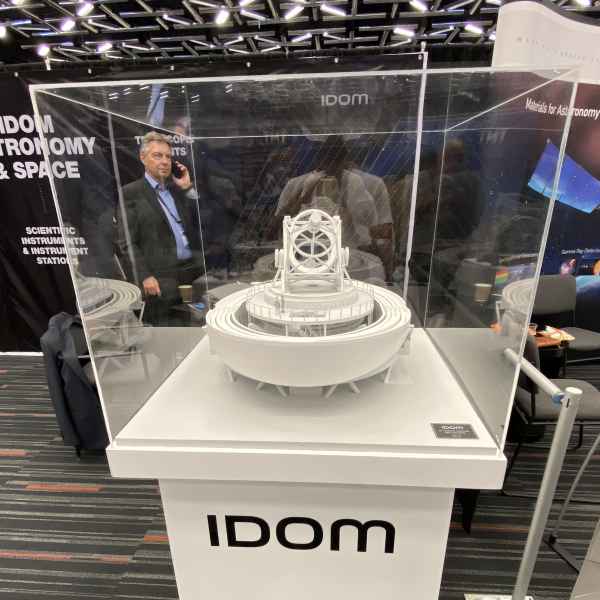The event took place in Montreal (Canada) on July 17-22. The program included 24 contributions related to the EST and SOLARNET projects.
The SPIE Astronomical Telescopes + Instrumentation symposium is one of the major events worldwide for astronomical optics. This year’s meeting was held in person for the first time since 2018. Over 2,000 technical papers were presented, focusing on the engineering and technical aspects of ground-based, airborne and space-based telescopes and their supporting instrumentation.
A large representation of engineers and scientists from the European Solar Telescope and the SOLARNET project participated in the meeting. They presented 24 oral contributions and posters, in six different conferences, describing the main advances achieved in the preliminary design of the telescope, as well as its associated instrumentation and techniques to be used to acquire and/or analyze the observations.
 Presentation of the status of the European Solar Telescope, by Carlos Quintero Noda (EST Project Office, IAC). Credit: Luis Bellot (IAA-CSIC).
Presentation of the status of the European Solar Telescope, by Carlos Quintero Noda (EST Project Office, IAC). Credit: Luis Bellot (IAA-CSIC).
Members of the EST Project Office showcased the preliminary designs of the different subsystems of the telescope, including the primary mirror, the adaptive secondary mirror, the structure, pier, and enclosure, the adaptive optics system, the polarimetric properties of the telescope, or the light distribution system.
Together with the EST Project Office, the companies awarded the contracts for the preliminary design also played a key role in the EST contributions to the SPIE Astronomical Telescopes and Instrumentation program. The engineering company SENER Aeroespacial presented the results of its work on the EST primary mirror preliminary design. HEIG-VD introduced the development of the active optics actuator for the EST primary mirror. TNO described the status of the adaptive secondary mirror, and IDOM presented the latest design of the EST structure.
Beyond the technical presentations, the meeting hosted a three-day exhibition where nearly 100 companies presented their products and services. IDOM displayed a scale model of EST at its booth as an example of the technological developments of the company. The model represents the updated design of the EST dome and mount, adapted to the final location on the Observatorio de El Roque de Los Muchachos (La Palma, Spain).
 Scale model of the EST structuret and dome at the IDOM booth in SPIE 2022. Credit: Luis Bellot (IAA-CSIC).
Scale model of the EST structuret and dome at the IDOM booth in SPIE 2022. Credit: Luis Bellot (IAA-CSIC).
EST contributions to SPIE Astronomical Telescopes + Instrumentation 2022
|
Ground-based and Airborne Telescopes IX
- Polarimetric performance of the European Solar Telescope. Ferro Rodríguez et al.
- The European Solar Telescope Mount Preliminary Design. Sanquirce et al.
- Overview of the status of the European Solar Telescope. Quintero Noda et al.
- Advances on the Telescope Structure conceptual design of the European Solar Telescope. Rodríguez-López et al.
Adaptive Optics VIII
- Adaptive Optics at the European Solar Telescope: status and future developments. Femenía-Castellá et al.
- Preliminary design of the Adaptive Secondary Mirror for the European Solar Telescope. Kuiper et al.
- Laboratory results of SCAO: getting ready for the EST MCAO. González-Cava et al.
- Chromaticity in Solar Adaptive Optics: a case study for the European Solar Telescope. Femenía-Castellá et al.
- Optomechanical integration of the MCAO prototype testbed for EST. Feijoo Amoedo et al.
- Deformable mirrors for the EST testbed: testing and characterization. González-Cava et al.
Modeling, Systems Engineering, and Project Management for Astronomy X
- Structural analysis for the EST preliminary design specifications. Soler Trujillo et al.
- Overview of telescope structure, enclosure and pier preliminary design of the European Solar Telescope. Cózar-Castellano et al.
- Dynamic modeling, control and simulation of the EST telescope structure: quantifying performance during tracking operation. González-Cava et al.
- M1 Assembly for EST: selection of the most promising baseline configuration for the preliminary design. Mato et al.
- The preliminary design of the M1 Assembly for the European Solar Telescope. Tomas et al.
- Active optics strategy for the alignment and operation of the European Solar Telescope. Belío-Asin et al.
- Design of the light distribution system for the European Solar Telescope. Feijoo Amoedo et al.
- Synchronized observations with multiple cameras in GRIS: A demonstrator of an instrument for the European Solar Telescope. Quintero Nehrkorn et al.
At the same time, technical results from various SOLARNET H2020 work packages were presented in Montreal. Several contributions dealt with the upgrade of the Gregor Infrared Spectropolarimeter IFU as a testbed for the EST image-slicer spectropolarimeters, a new technique to achieve high-precision absolute polarimetry in solar telescopes, and inversion codes for the real-time analysis of high-spatial and temporal resolution spectropolarimetric observations.
 Presentation of Franziska Zeuner (IRSOL) to SPIE Astronomical Telescopes + Instrumentation 2022. Credit: Luis Bellot (IAA-CSIC).
Presentation of Franziska Zeuner (IRSOL) to SPIE Astronomical Telescopes + Instrumentation 2022. Credit: Luis Bellot (IAA-CSIC).
SOLARNET contributions to SPIE Astronomical Telescopes + Instrumentation 2022
|
Ground-based and Airborne Instrumentation for Astronomy IX
- Enhancing polarimetric accuracy of solar polarimetry by coalescing slow and fast modulation: method description and first performance tests. Zeuner et al.
- The upgraded GREGOR Infrared Spectrograph. Quintero Noda et al.
Software and Cyberinfrastructure for Astronomy VII
- Real-time inversion of solar spectropolarimetric data at high spatial and temporal evolution: HPC and GPU implementations. Bellot Rubio et al.
Advances in Optical and Mechanical Technologies for Telescopes and Instrumentation V
- Development of a 35-micron slicer-based Integral Field Unit for high-resolution 2D solar spectroscopy. Regalado Olivares et al.
- Optical design of an image slicer-based Integral Field Unit for the THEMIS solar telescope. Regalado Olivares et al.
- Optical and mechanical updates in the GREGOR Infrared Spectrograph for simultaneous spectral observations. Regalado Olivares et al.
Image gallery
Error

